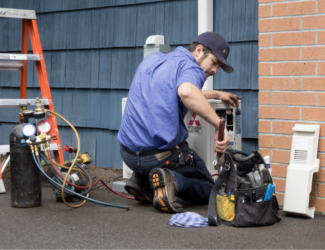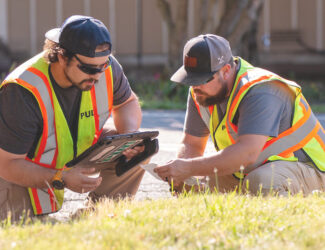
Clean Buildings
A new state-wide building energy performance standard, Clean Buildings for Washington (HB1257), impacts all commercial buildings 50,000 s.f. and larger. Example building types:

Compliance deadlines for the largest buildings begin in 2026 and requirements must be operationalized one year prior to the deadline in order to avoid financial penalties. The new law is complex but we’re here to help!
Some highlights about the law:
- There are two paths to compliance.
- If you can isolate the energy use for your building with utility metering or sub-metering and verify that your building use-type has an Energy Use Intensity (EUI) target, you can comply by meeting the EUI target, also known as benchmarking.
OR: - You can meet compliance through investment criteria, which involves using a detailed (ASHRAE Level II) energy audit.
- If you can isolate the energy use for your building with utility metering or sub-metering and verify that your building use-type has an Energy Use Intensity (EUI) target, you can comply by meeting the EUI target, also known as benchmarking.
- Either path requires both an energy management plan and an operations and maintenance plan.
We can help you get ready to meet this new state efficiency standard!
Join Our FREE Clean Buildings Accelerator Program
- Understand the law and how it applies to you
- Get assistance with compliance requirements
- Join a network of peers in a cohort learning model
- Receive tailored coaching, scanning and prioritizing of energy-saving opportunities based on site specifics and organizational interests
View Clean Buildings Accelerator program description
Sign up for a coffee chat to learn more
All chats are 11 am-noon
- October 9
- November 7
- December 11
Next Peer Cohort starts in Q1 2025. Email us to enroll!
Learn more about...
Benchmarking
Energy Benchmarking is the process of measuring and tracking a building’s energy use over time. By using certain building characteristics along with monthly consumption data, owners and occupants can begin to understand how their building is performing on an operational level compared to similar buildings in their community and around the country.
To perform benchmarking:
Important: For Multi-tenant Commercial or Multifamily Buildings, click here for instructions on how to create a virtual “Whole Building” profile in MySnoPUD before linking with Energy Star.
- Identify all your energy inputs (electric, natural gas, etc.) and create your Energy Star Portfolio Manager Account
- Link your MySnoPUD account to the Energy Star Portfolio Manager Account. Here’s how.
- Compare your EUI to your EUIt. If your EUI exceeds your EUIt, perform energy-efficiency work. We can help you determine the best measures to pursue.
NOTE: if your EUI exceeds your EUIt by 15 points or more, you may qualify for additional state incentives.
Investment Criteria
Top 3 Reasons to Comply through Investment Criteria:
- Site is master-metered (one utility meter for several buildings) and there is no sub-metering or plans to sub-meter to building
- No EUI target for building-use type (ex. data center)
- EUI is way over target and would not be cost-effective to comply by meeting EUIt.
You can achieve compliance by making financial investments. This process includes:
- ASHRAE Level II Energy Audit
- Life-Cycle Cost Analysis
- Implement all Cost-Effective Energy Efficiency Measures
- 12 months M&V showing at least 75% of estimated energy savings
Department of Commerce Resources
- Visit Clean Buildings information on Commerce website
- Click to request a new notification letter from Commerce
- Gross Floor Area Measurement Tool
- Energy Use Intensity Target (EUIt) Tools
- Compliance Pathway
- Submetering
Loans for Energy-Efficiency Projects
Snohomish County’s Commercial Property Assessed Clean Energy & Resiliency (C-PACER) program is an innovative financing mechanism to help commercial, industrial, agricultural and multi-family buildings become more efficient and resilient.
C-PACER does not use any government funds, it is a loan agreement between a private lender and the property owner, like a mortgage or home improvement loan. The unique part about C-PACER financing is that the county records the loan as a lien on the property, which means that if the property owner sells the building, the assessment stays with the building (unless the payoff is part of the sale agreement).







